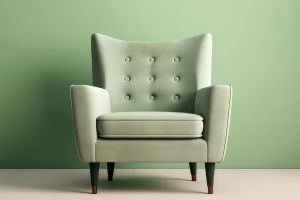When selecting jars for storage or decoration, you may come across porcelain and ceramic jars, two popular options often used interchangeably.
While both belong to the ceramic family, there are significant differences between them in terms of composition, durability, aesthetics, and price.
Knowing these distinctions can help you choose the right jar for your needs.
1. Material Composition and Firing Process
The main difference between porcelain and ceramic jars lies in their materials and how they're made.
Ceramic Jars: These are made from a mixture of clay, water, and other minerals and are fired at relatively low temperatures, typically between 1,000 and 1,200 degrees Celsius. This process creates a more porous, less dense material.
Porcelain Jars: Porcelain, however, is crafted from kaolin clay, known for its fine texture. Porcelain jars are fired at much higher temperatures, usually between 1,200 and 1,400 degrees Celsius. This high-temperature firing and fine clay result in a denser, less porous, and more refined material.
2. Durability and Strength
Due to differences in material and firing temperature, porcelain and ceramic jars have varying levels of durability.
Ceramic Jars: These jars are generally less dense and more porous, making them more susceptible to chipping, cracking, or absorbing moisture.
While they are suitable for everyday use, they might not hold up well under high-impact or extreme temperature changes, so they're best suited for decorative or light storage purposes.
Porcelain Jars: The high firing temperature makes porcelain jars more durable and less prone to chipping or moisture absorption.
This strength and durability make porcelain jars ideal for frequent use, especially in settings where they may need to withstand impact or exposure to moisture.
3. Appearance and Style
Both ceramic and porcelain jars offer a wide range of styles, but their aesthetics differ.
Ceramic Jars: These jars often have a more rustic, casual appearance due to their thicker structure and slightly rougher surface.
The lower firing temperature also allows for a variety of glazes, giving ceramic jars a broader range of colors and finishes, making them ideal for cozy, casual decor settings.
Porcelain Jars: Porcelain jars have a smooth, often translucent surface with a glossy finish, lending them a more refined and elegant look.
The fine kaolin clay allows for intricate designs and delicate patterns, which are common in traditional porcelain pieces. Porcelain's sophisticated appearance makes it a popular choice for formal settings and decorative uses.
4. Cost and Practicality
Price and use case are also important when deciding between ceramic and porcelain jars.
Ceramic Jars: Due to their simpler production process, ceramic jars are generally more affordable than porcelain. They are an excellent choice for everyday storage or decorative use in kitchens and casual spaces, offering both versatility and a lower price point.
Porcelain Jars: The materials and high-temperature firing process make porcelain jars more expensive, but their durability and elegant look make them worthwhile for decorative purposes, special occasions, or heirloom pieces.
While both ceramic and porcelain jars serve similar storage and decorative purposes, their differences in composition, durability, style, and cost set them apart. Ceramic jars offer a budget-friendly, versatile option for casual use, while porcelain jars provide elegance and durability, ideal for more formal or decorative settings.
Understanding these distinctions can help you select a jar that best suits your style and practical needs.


